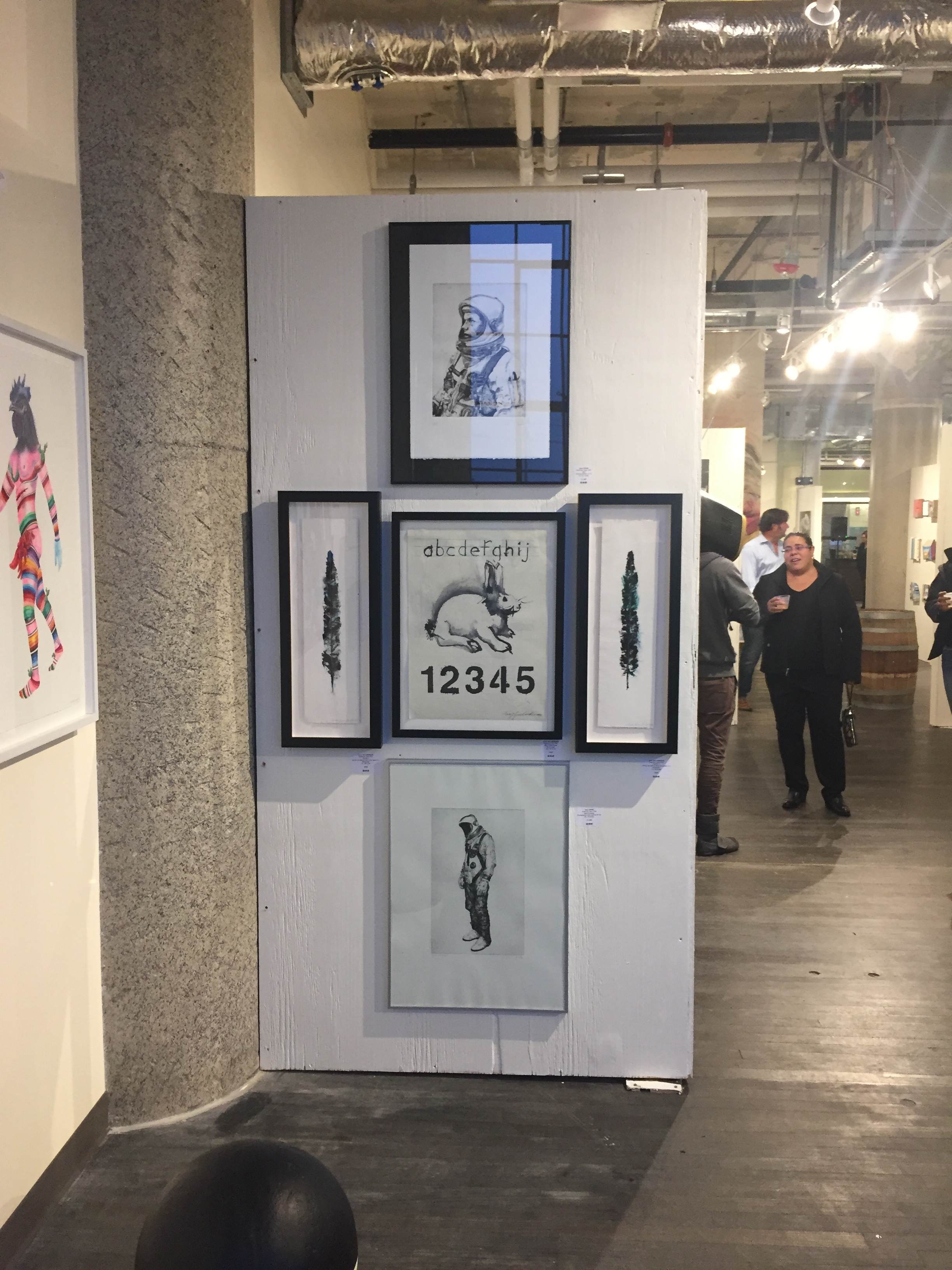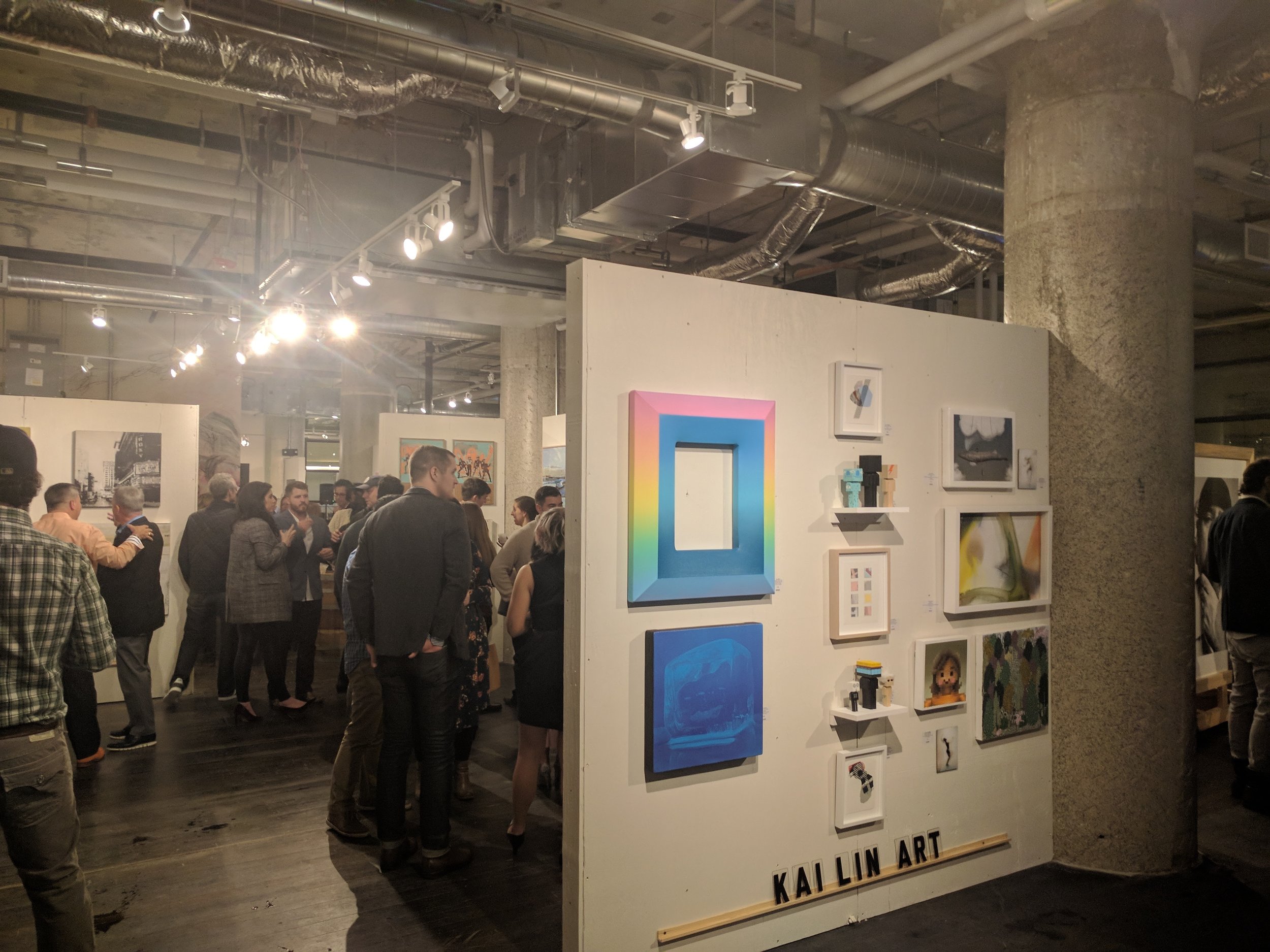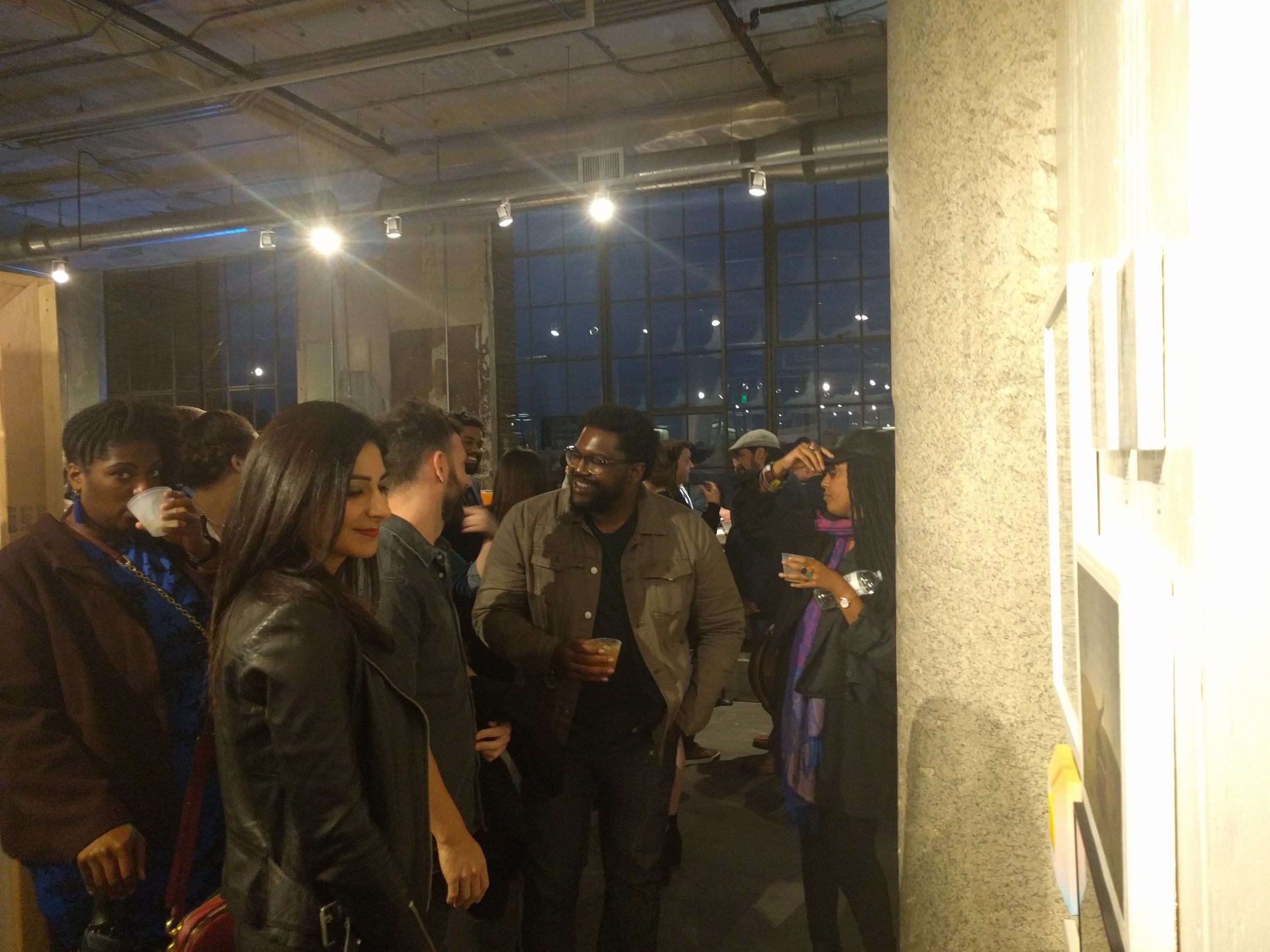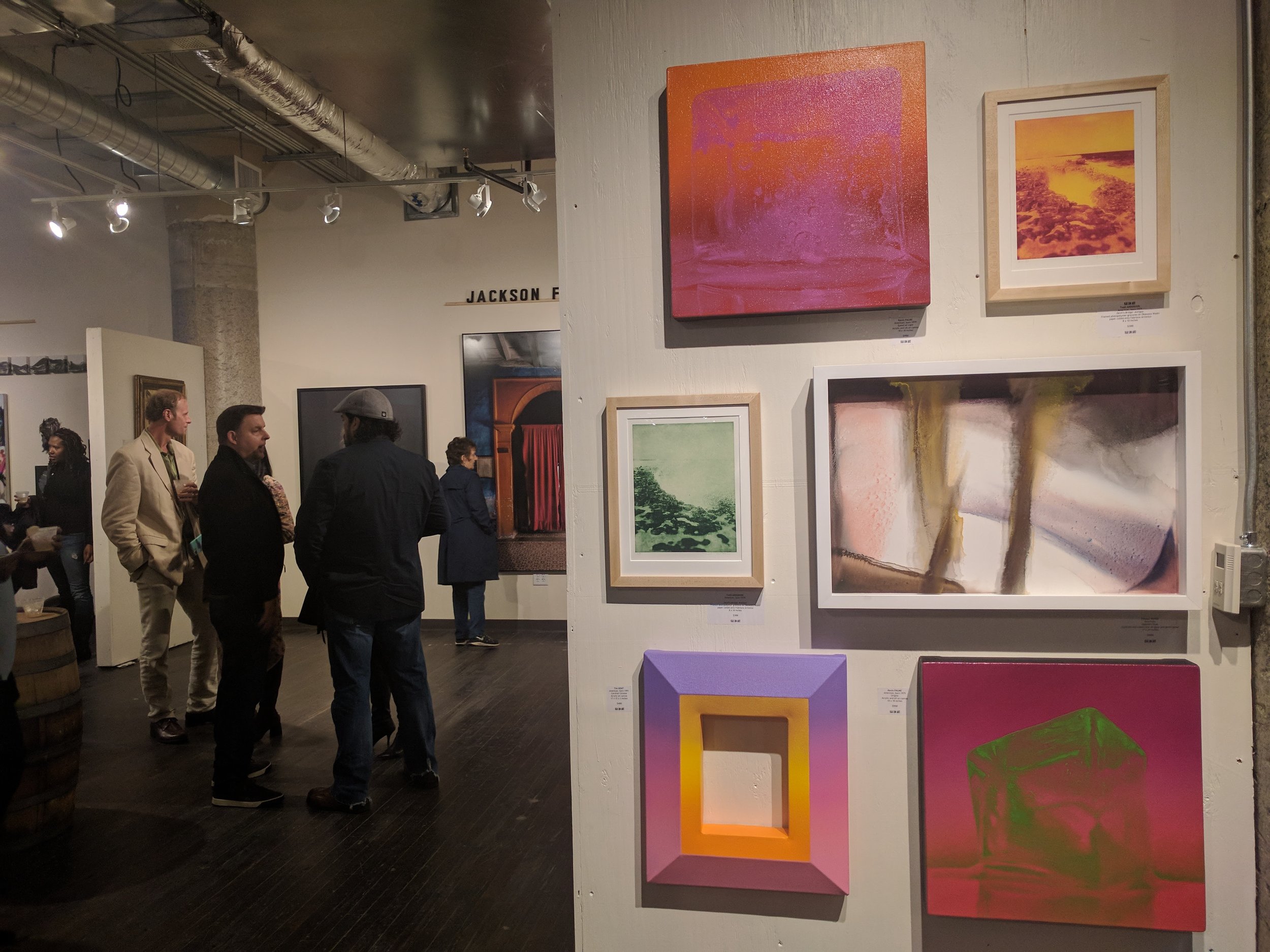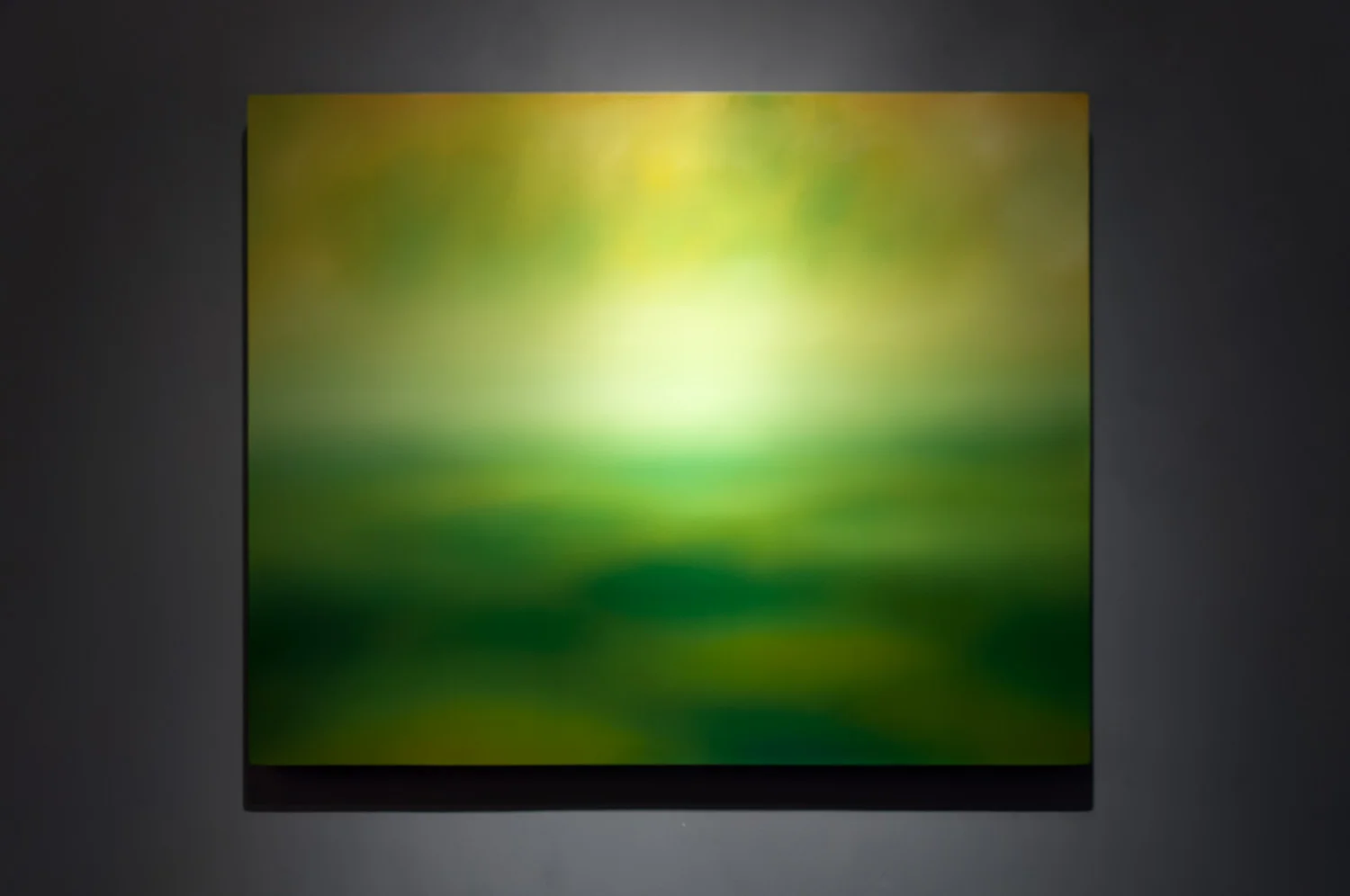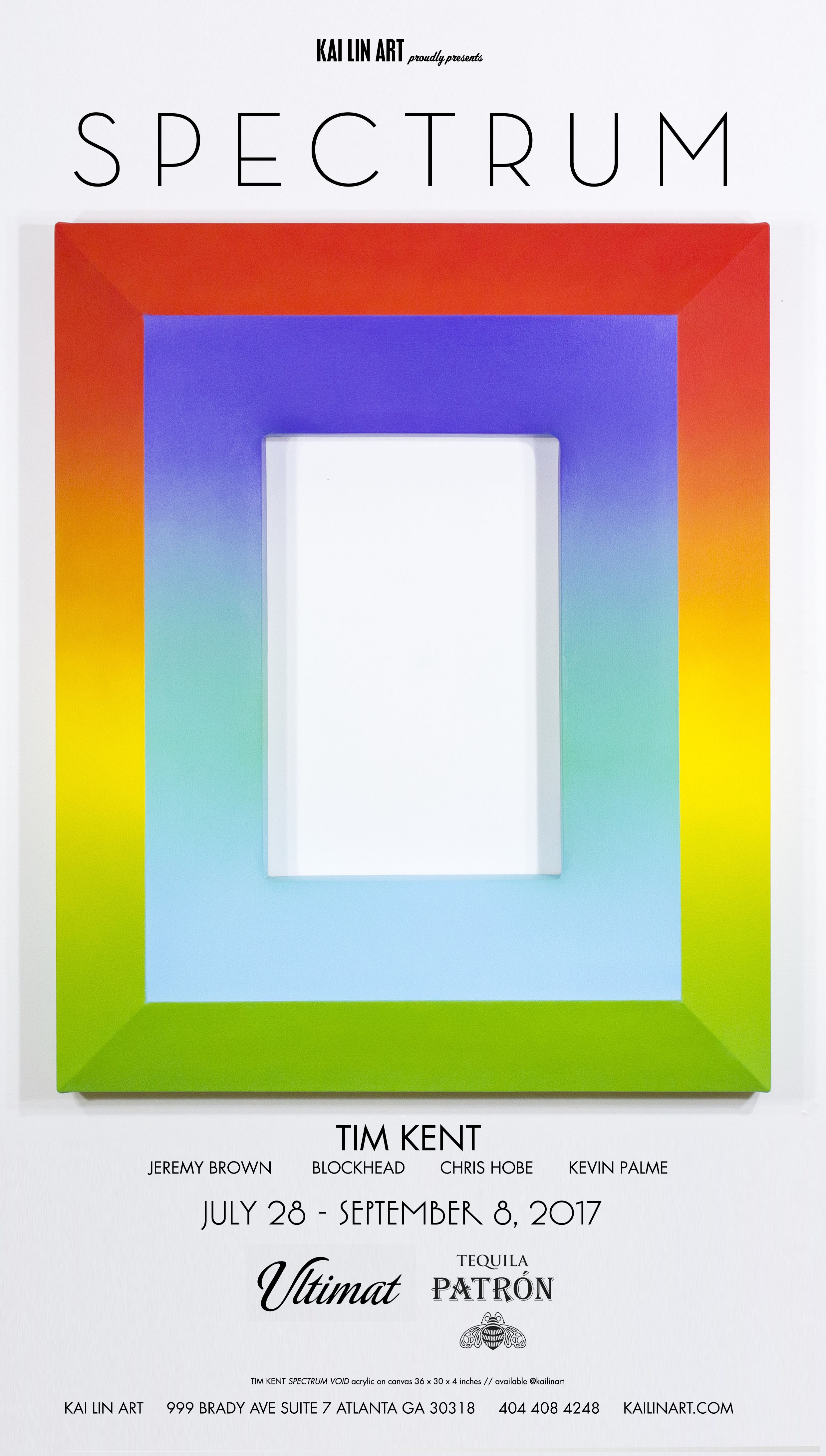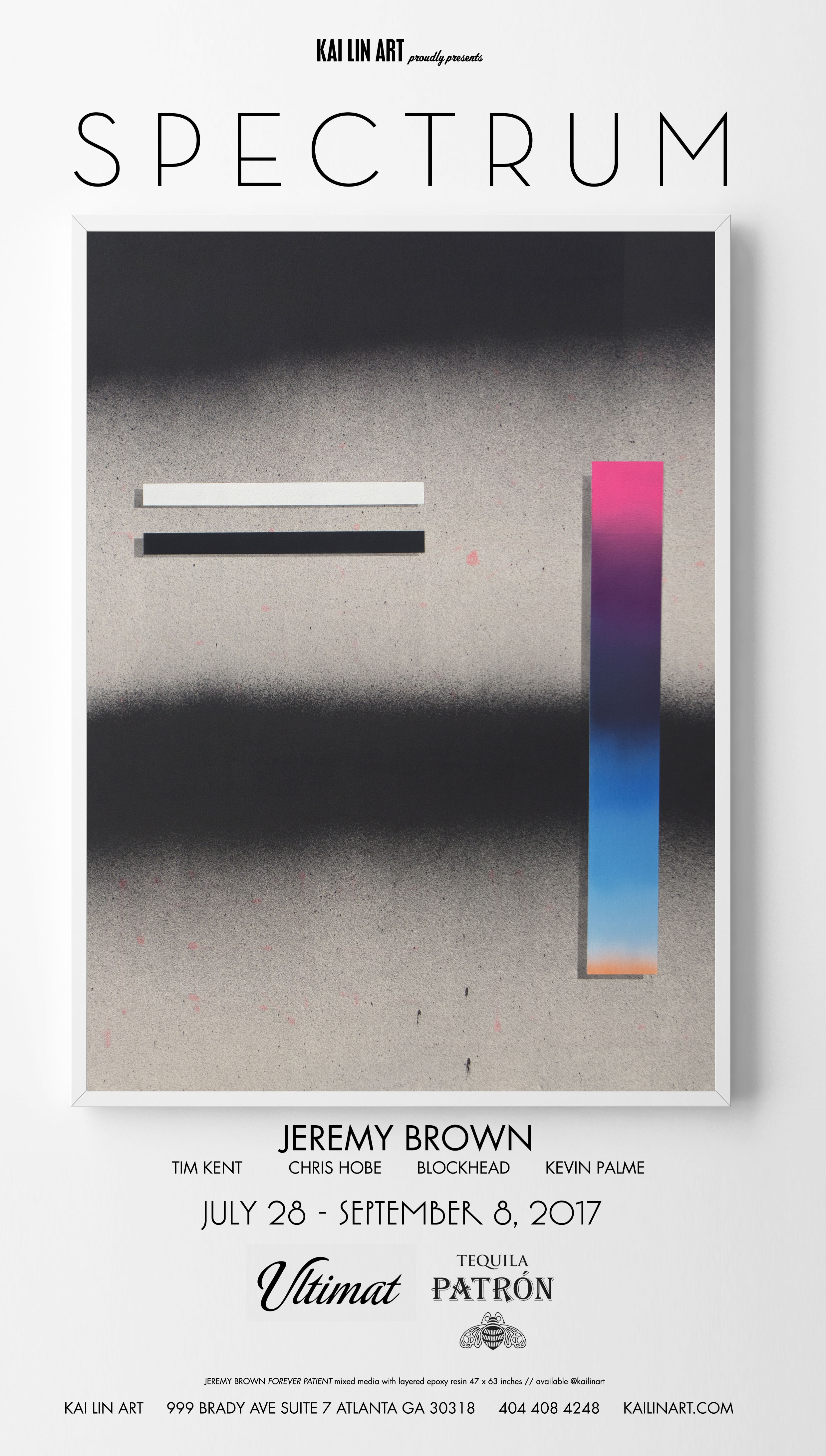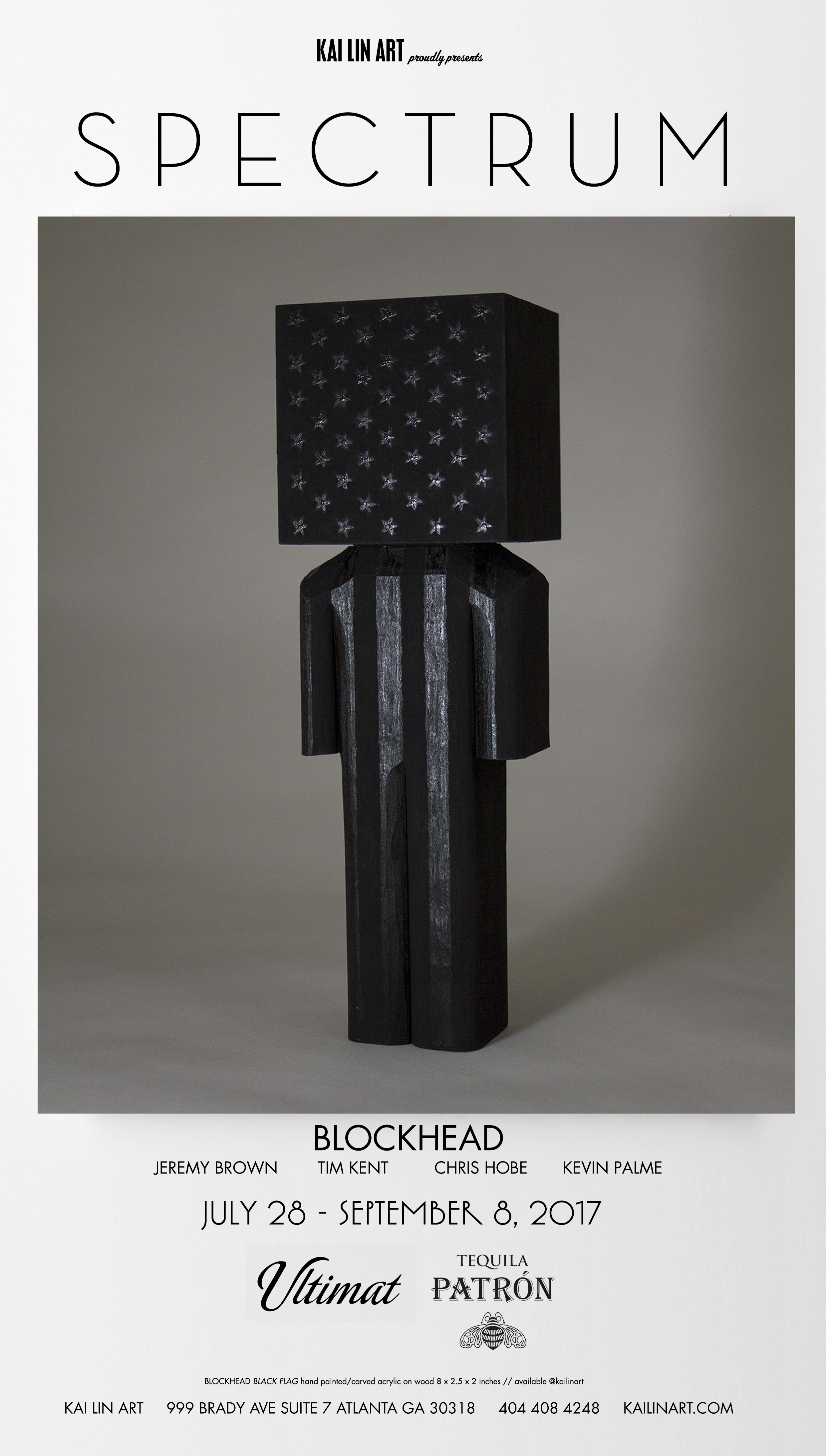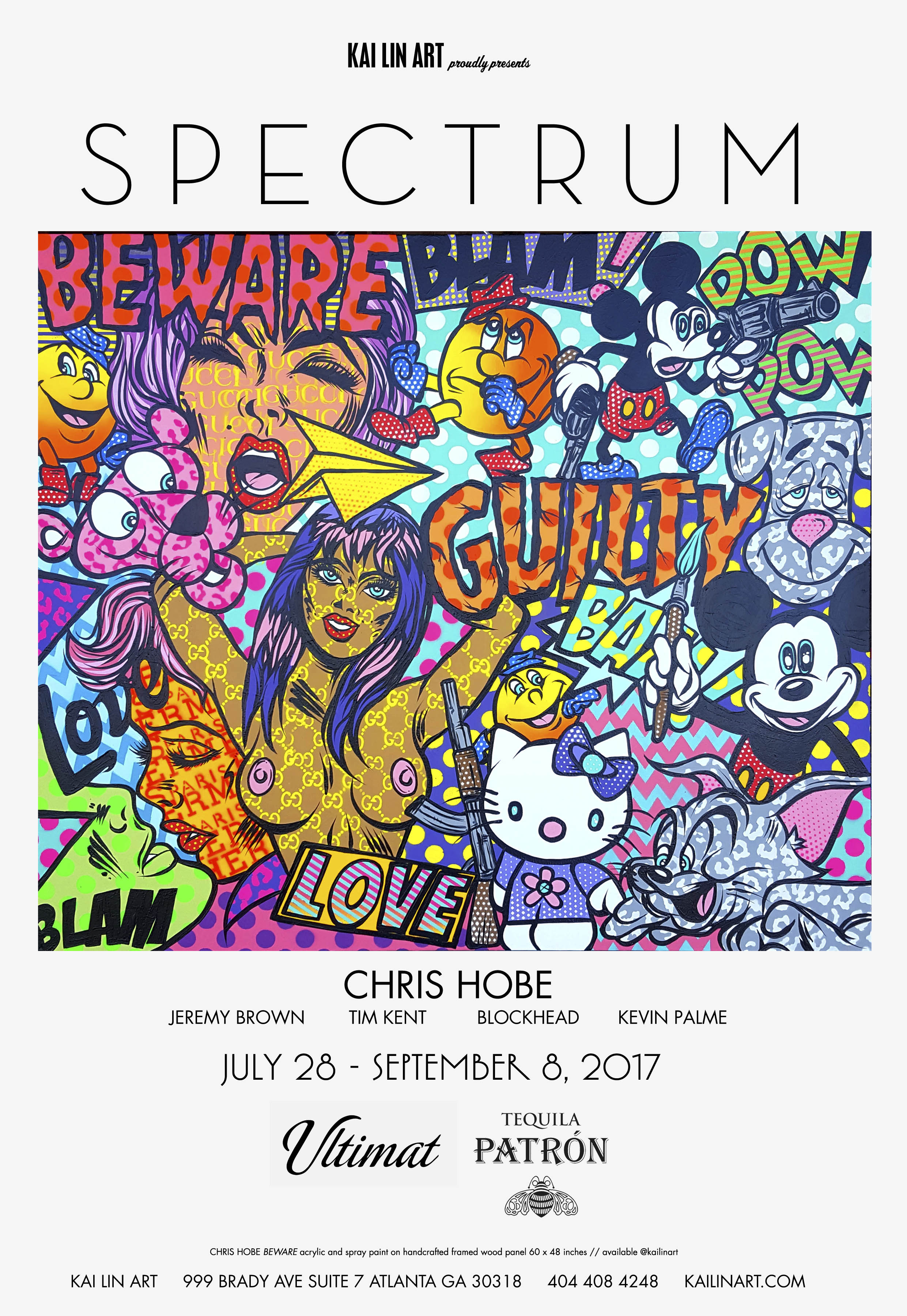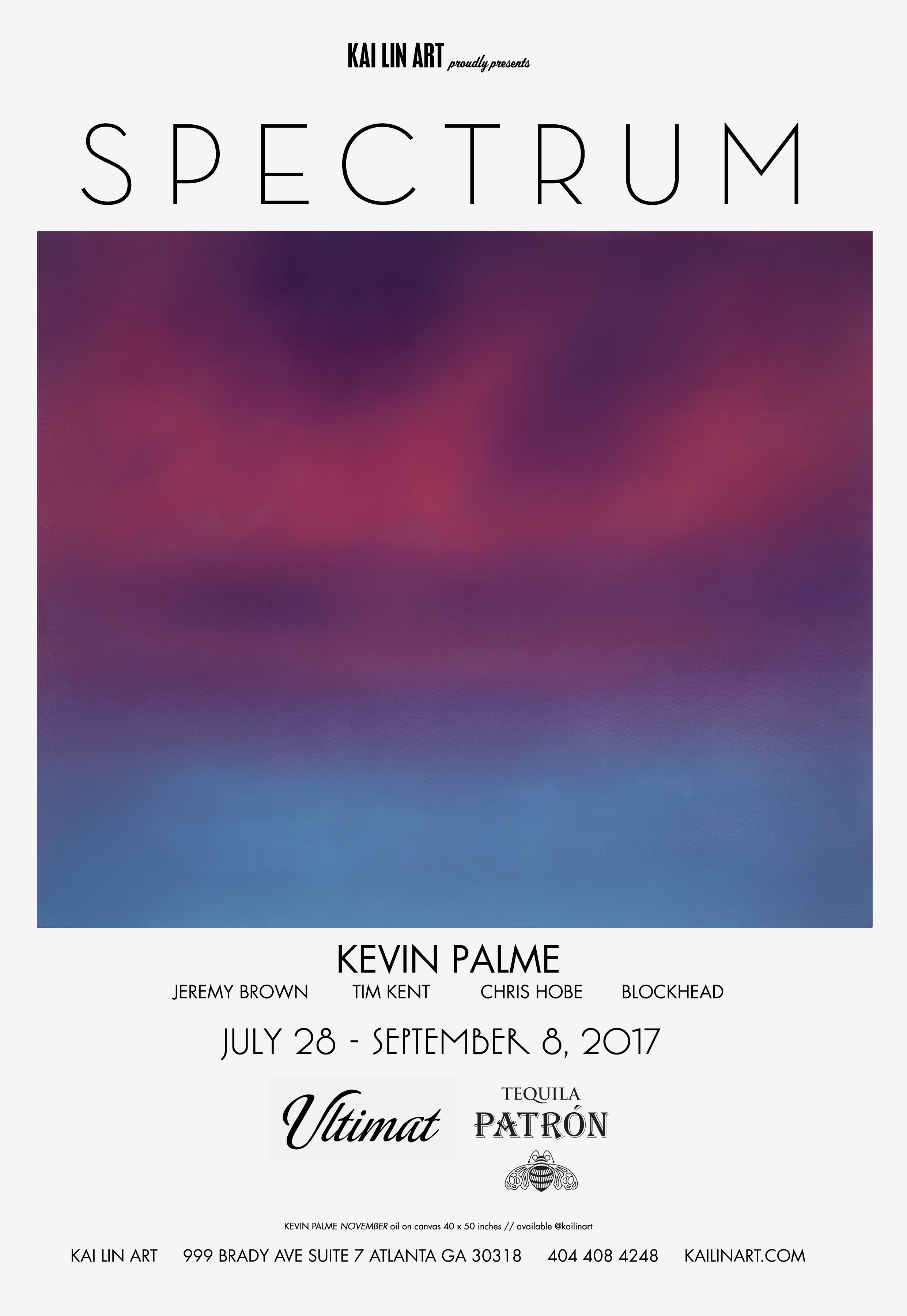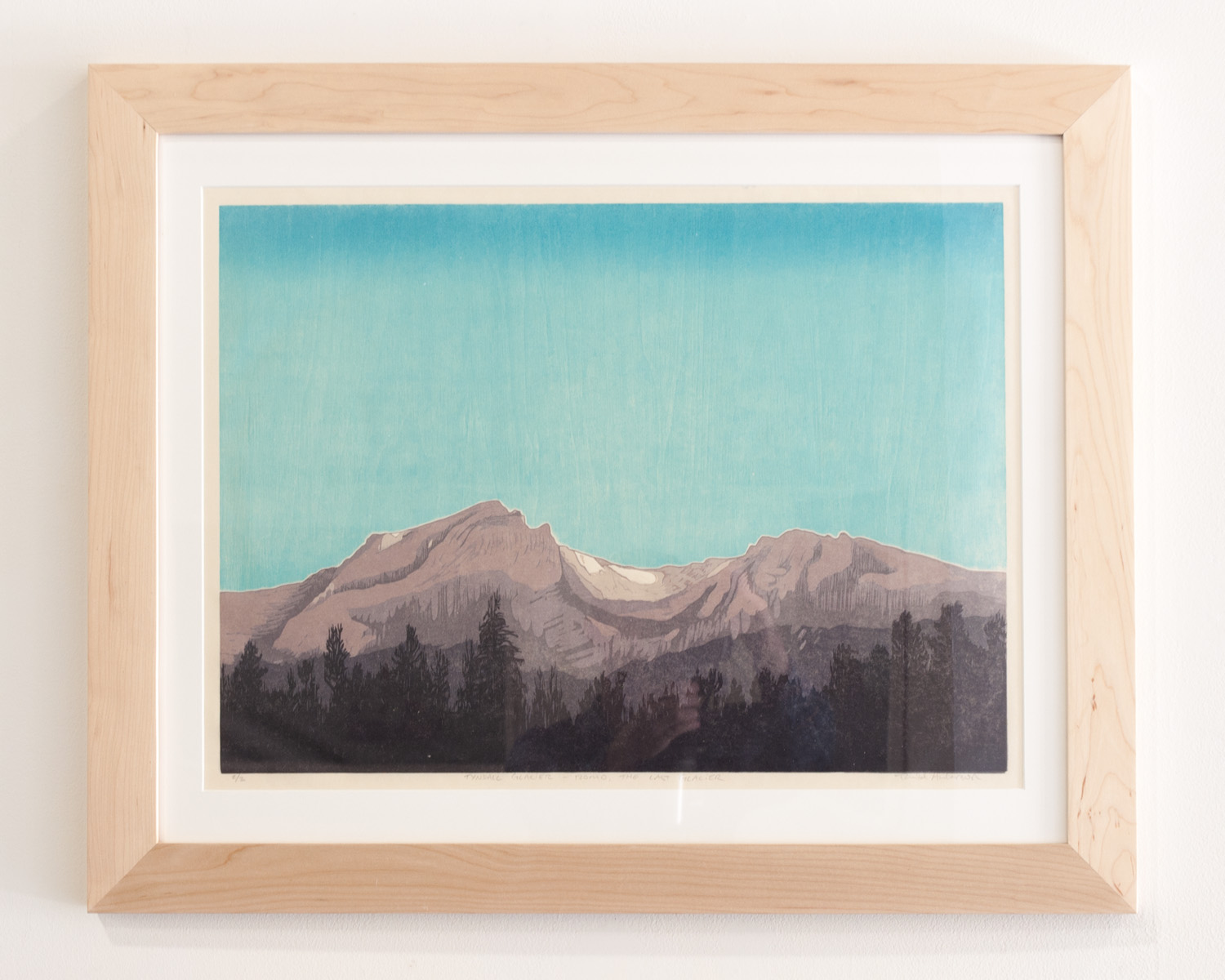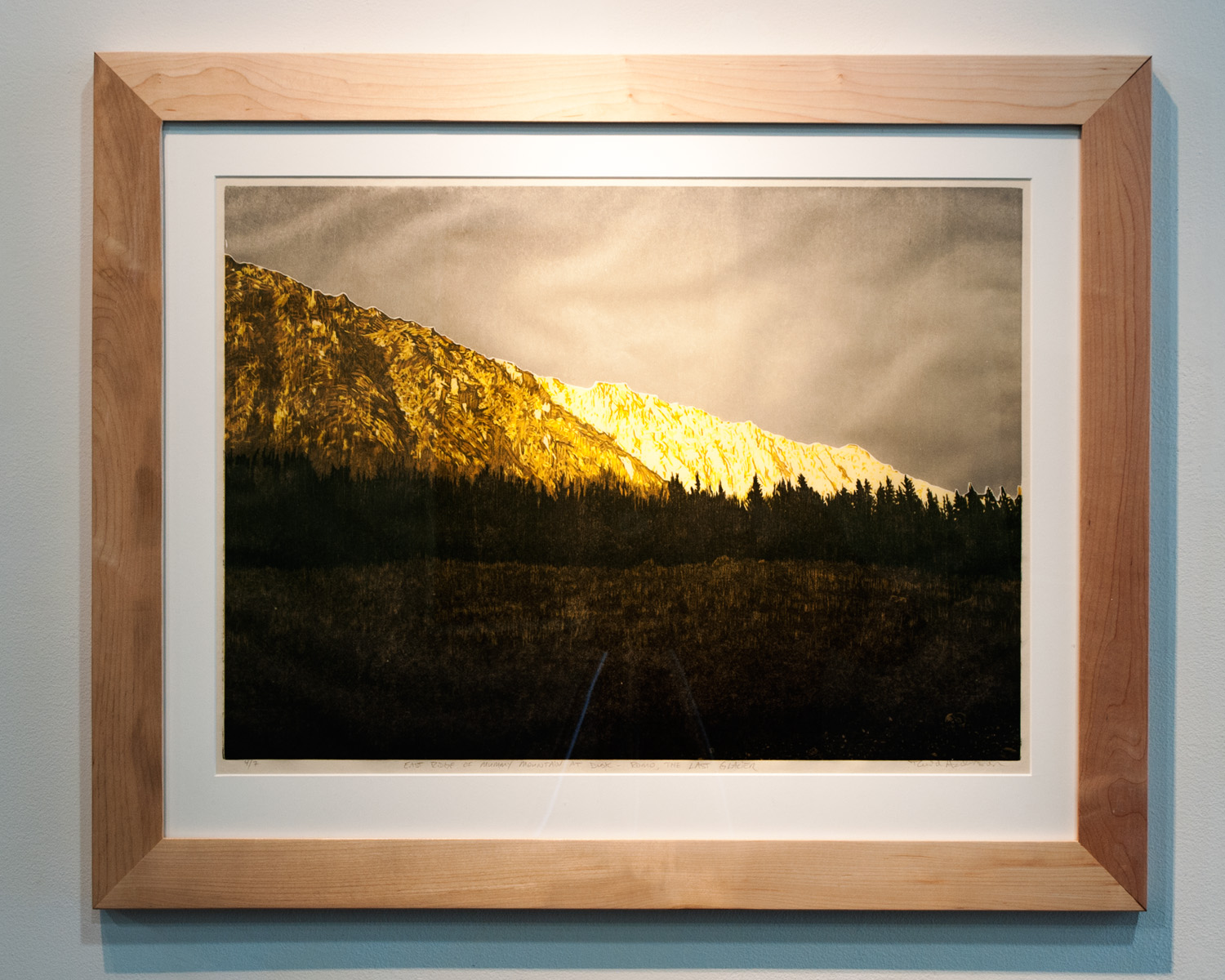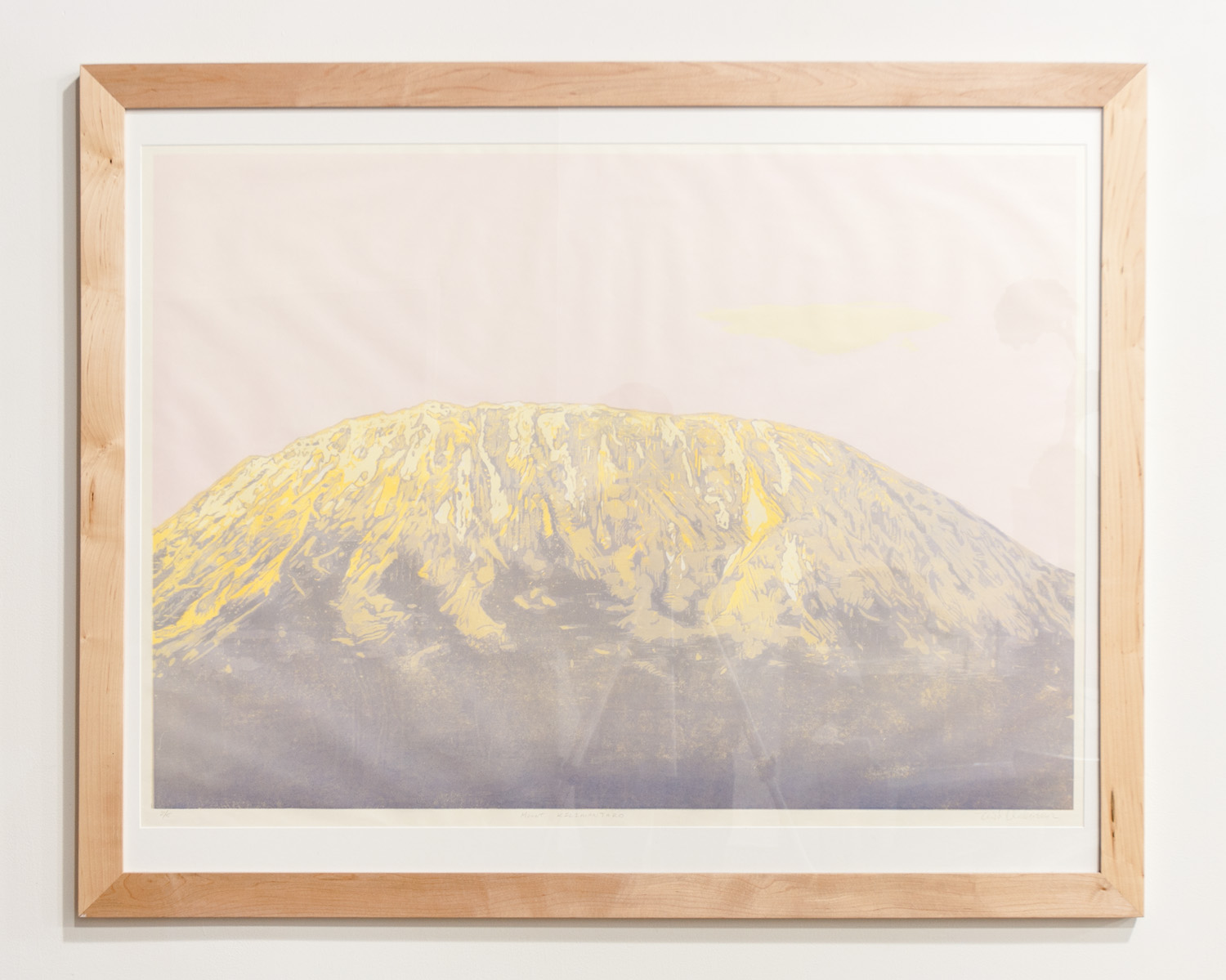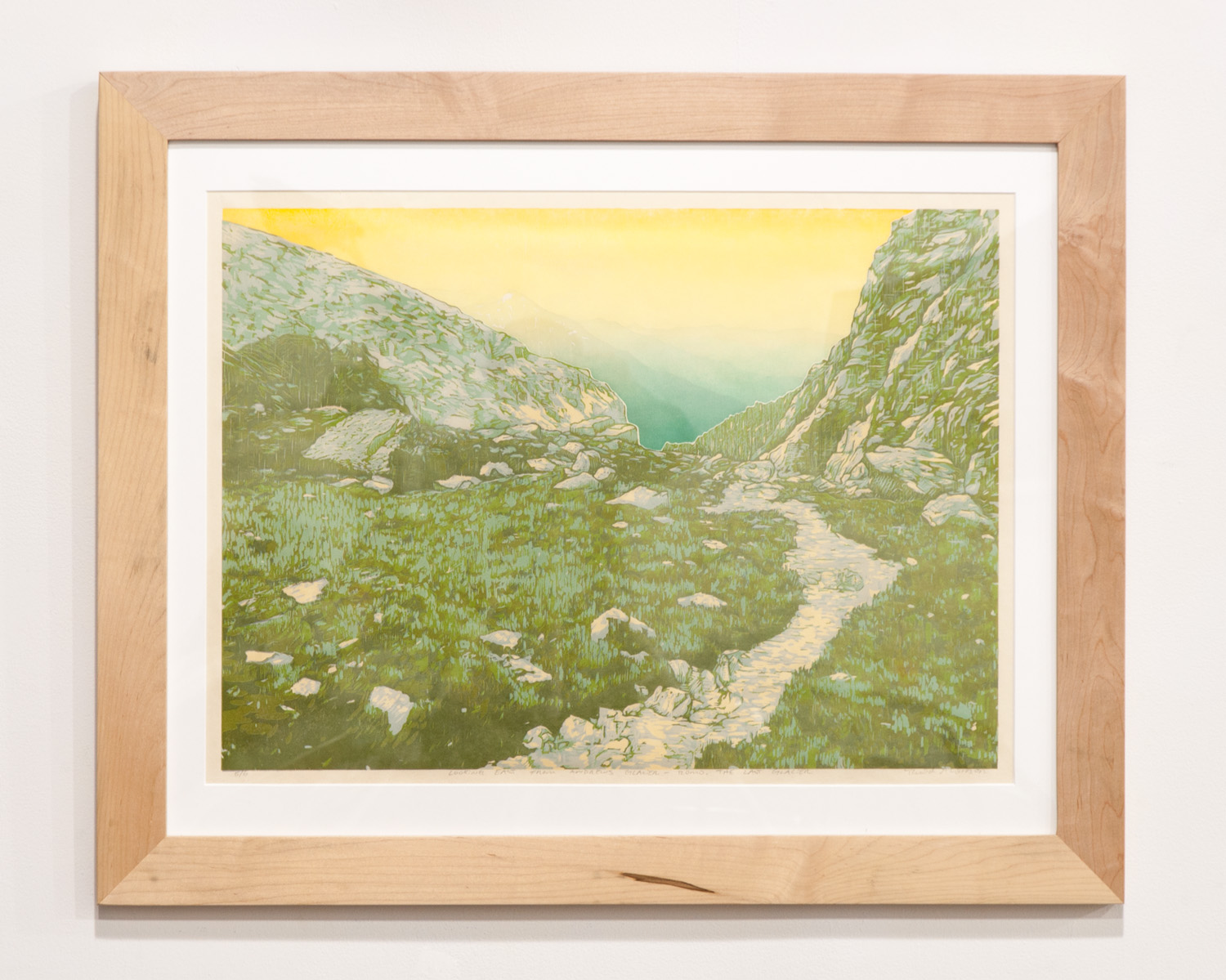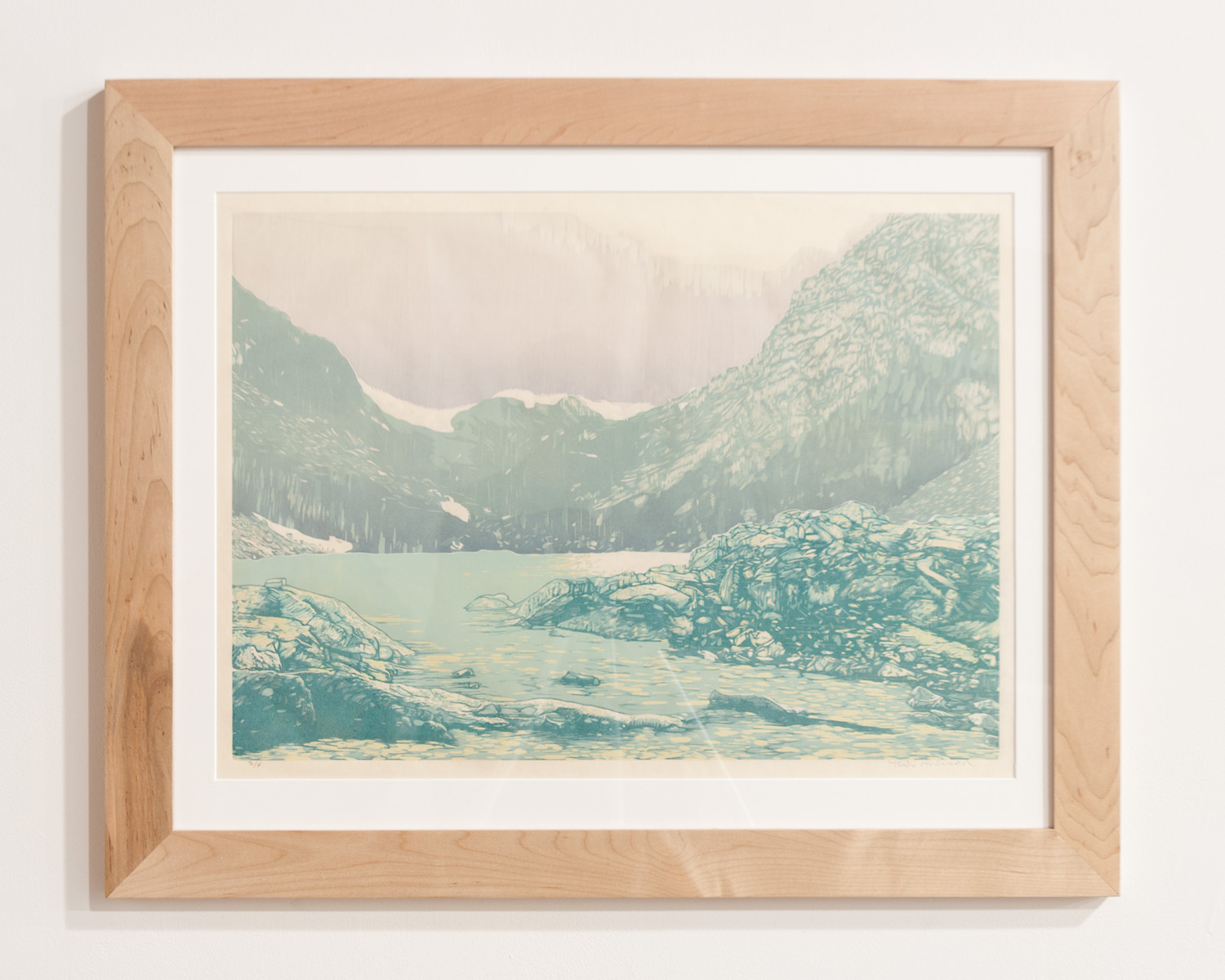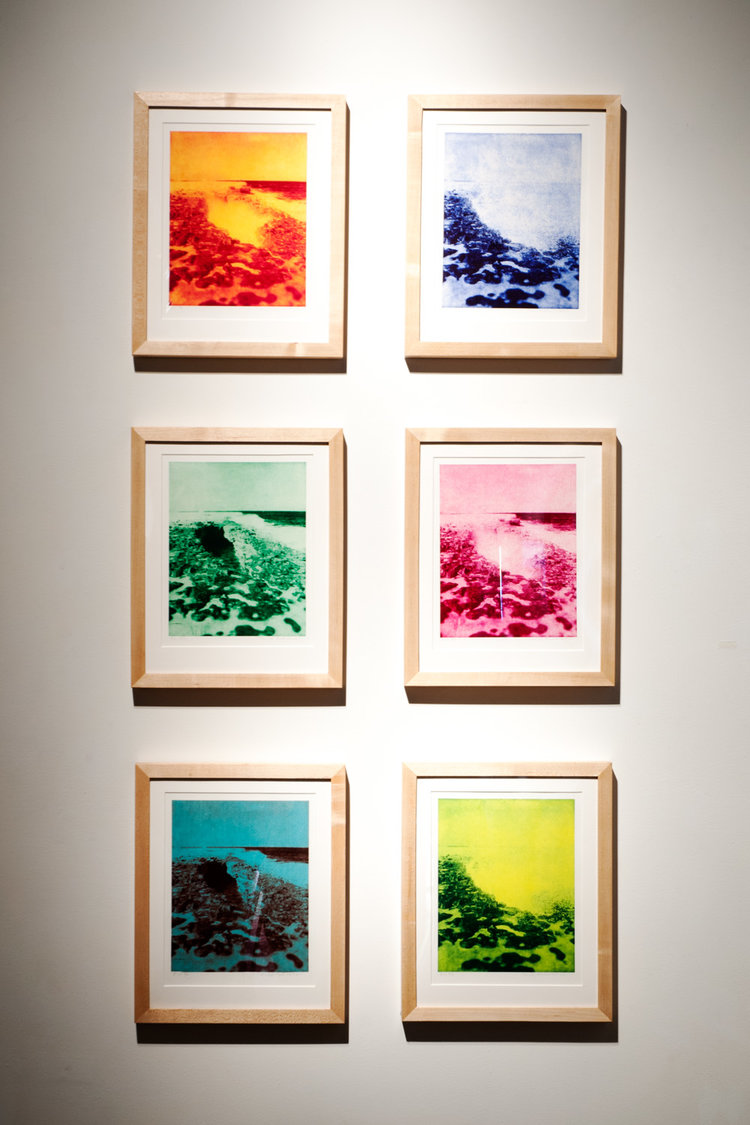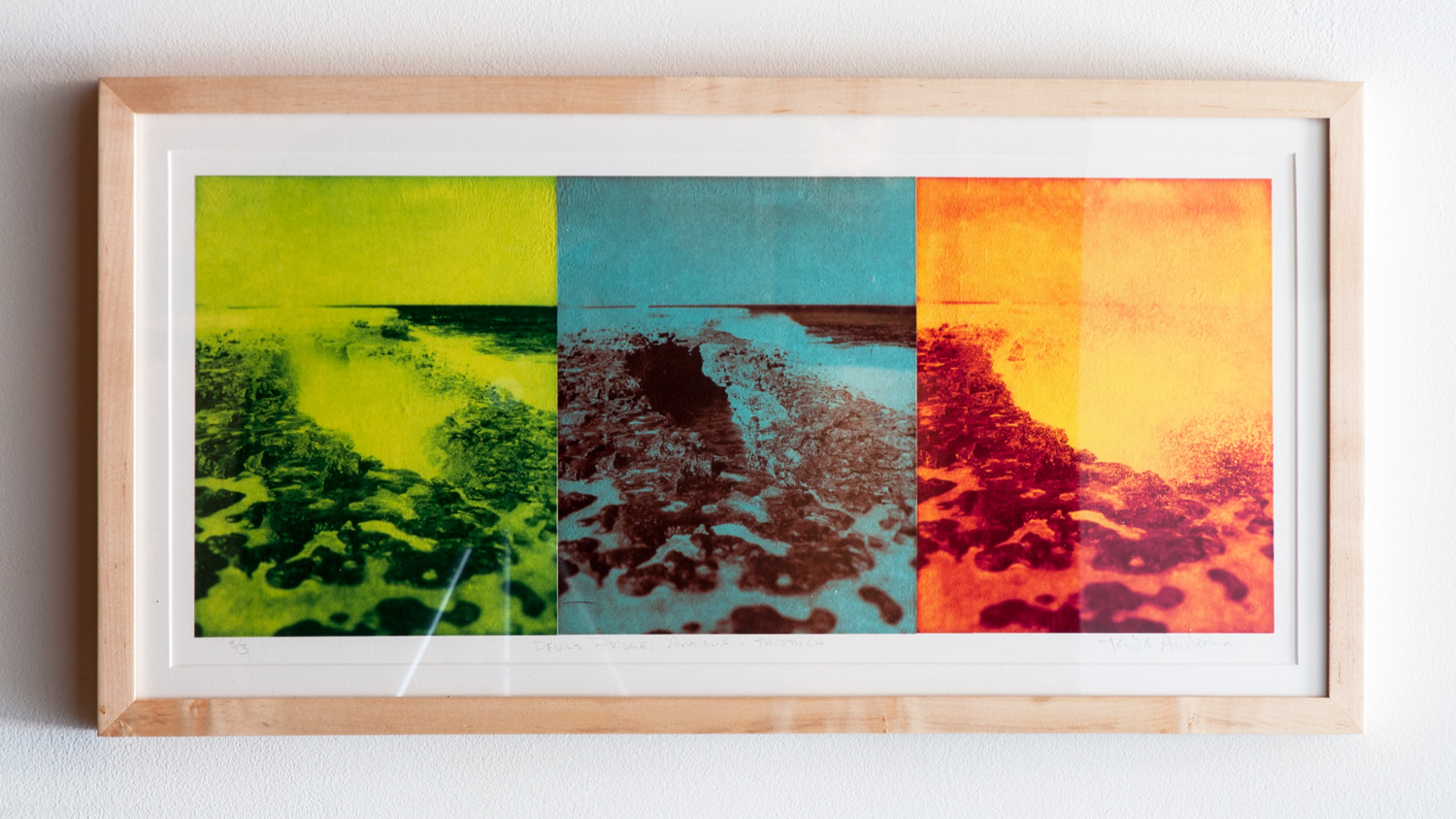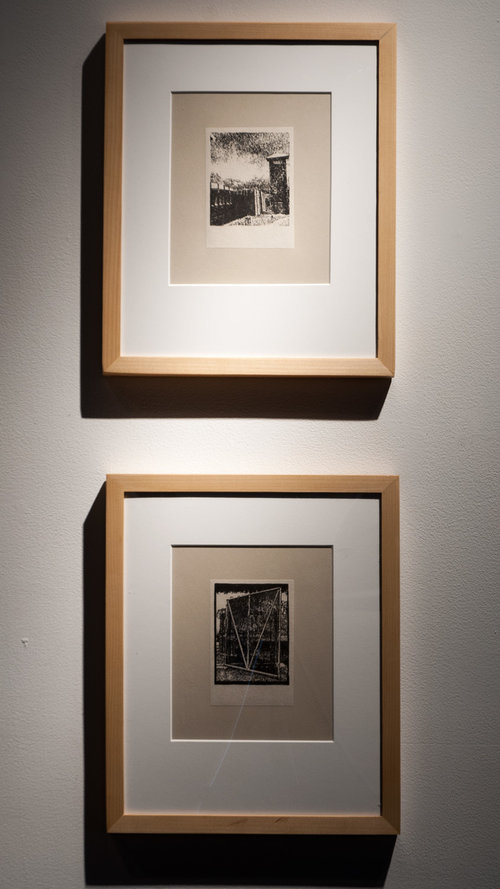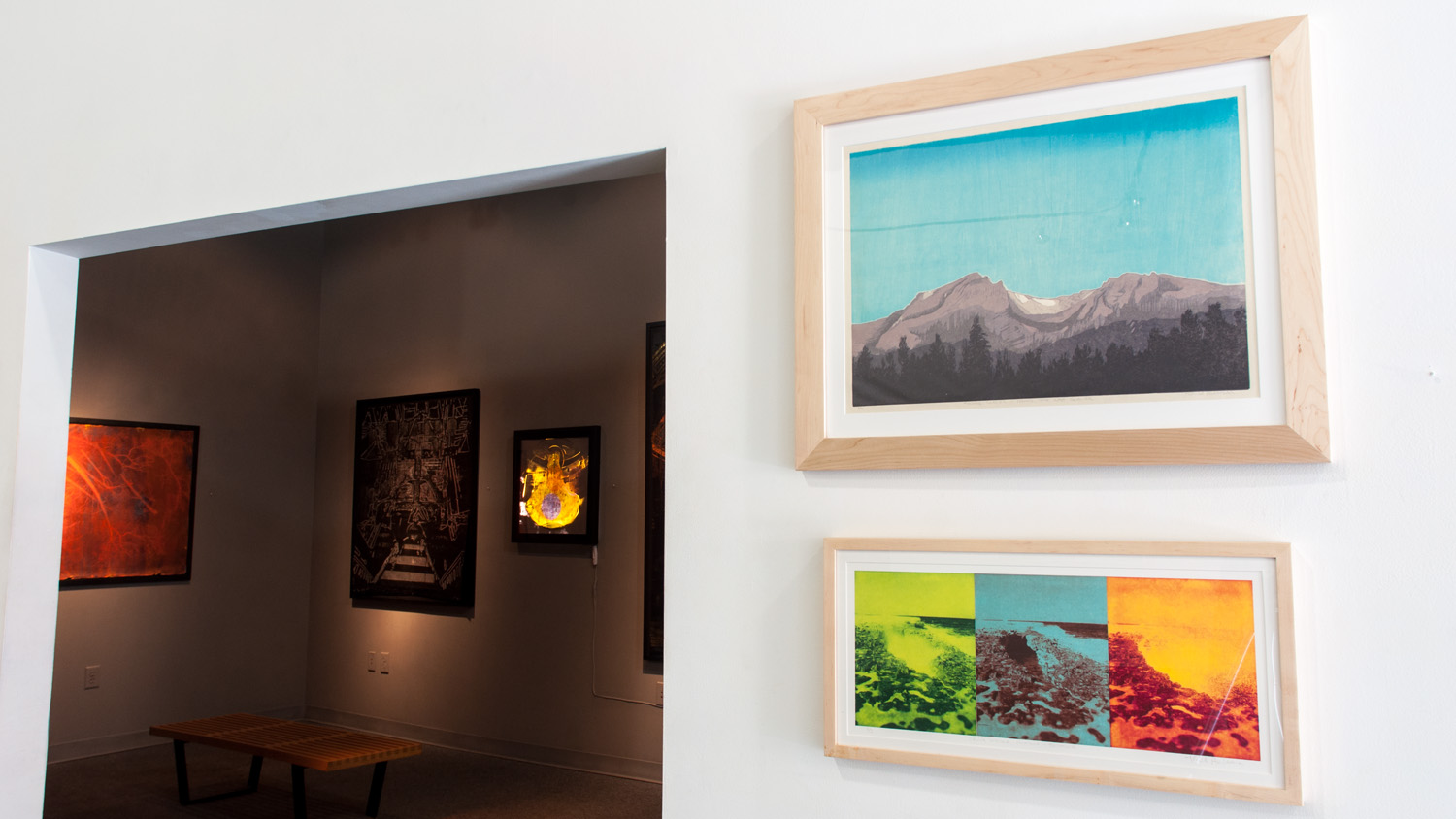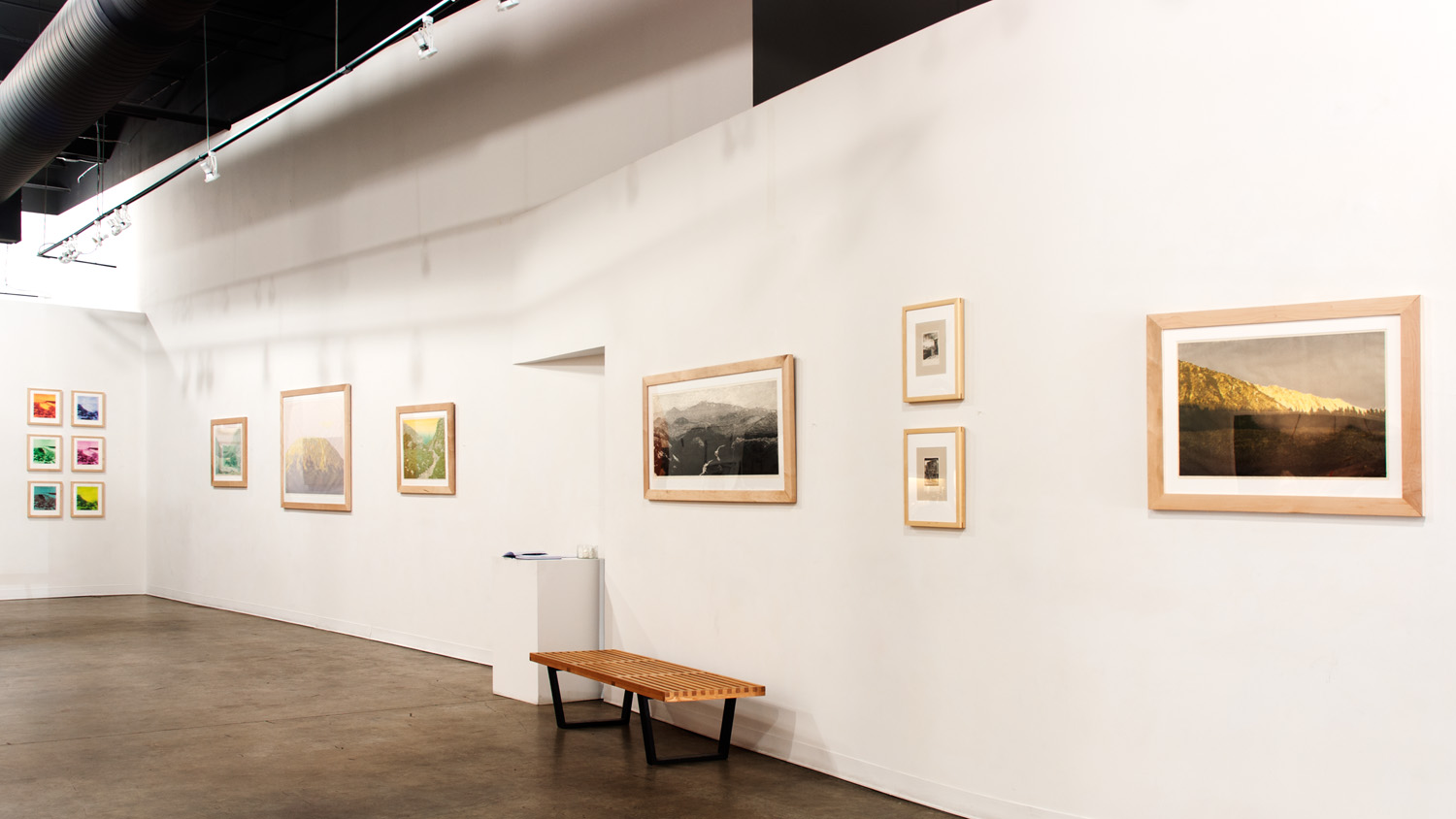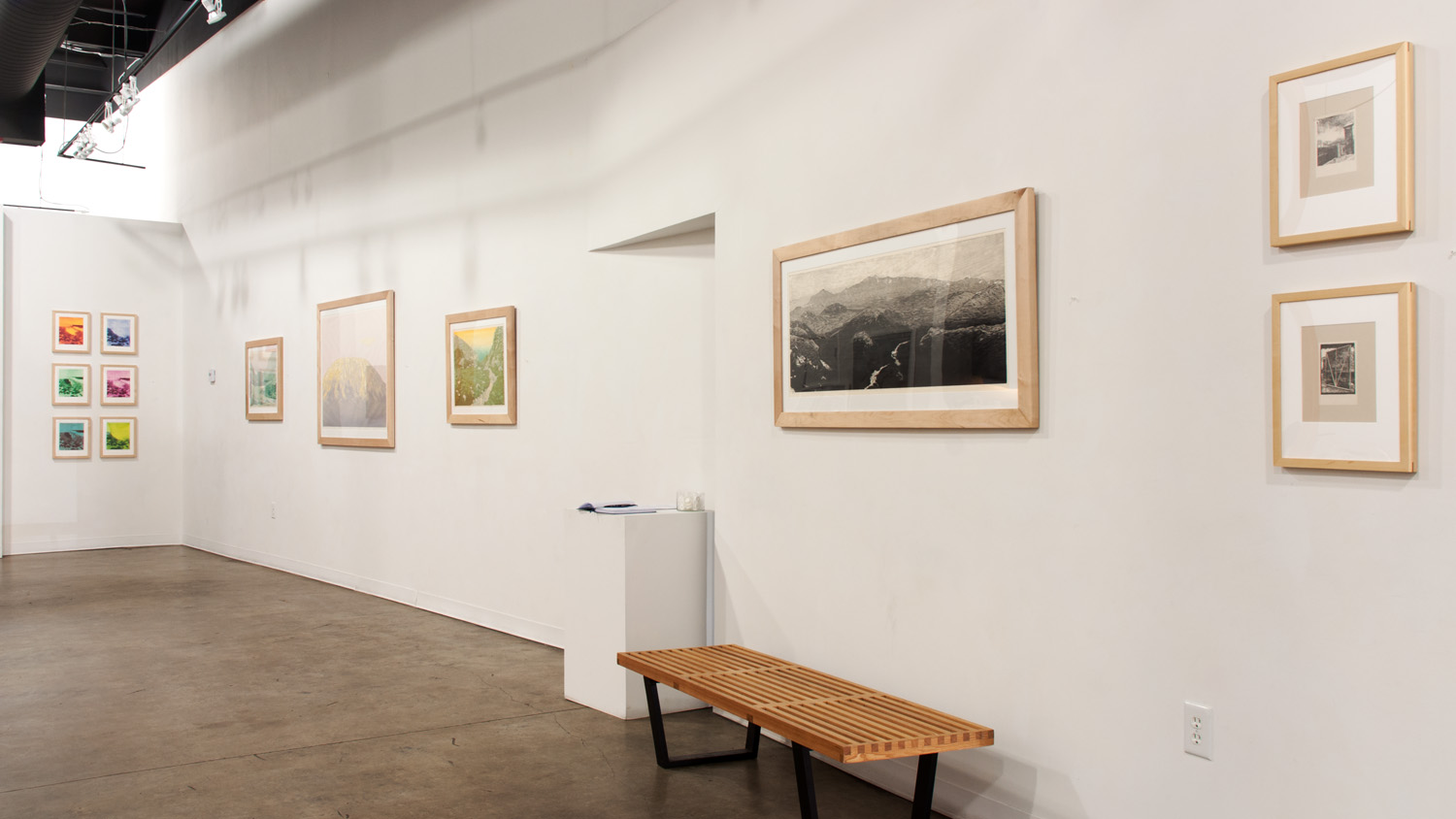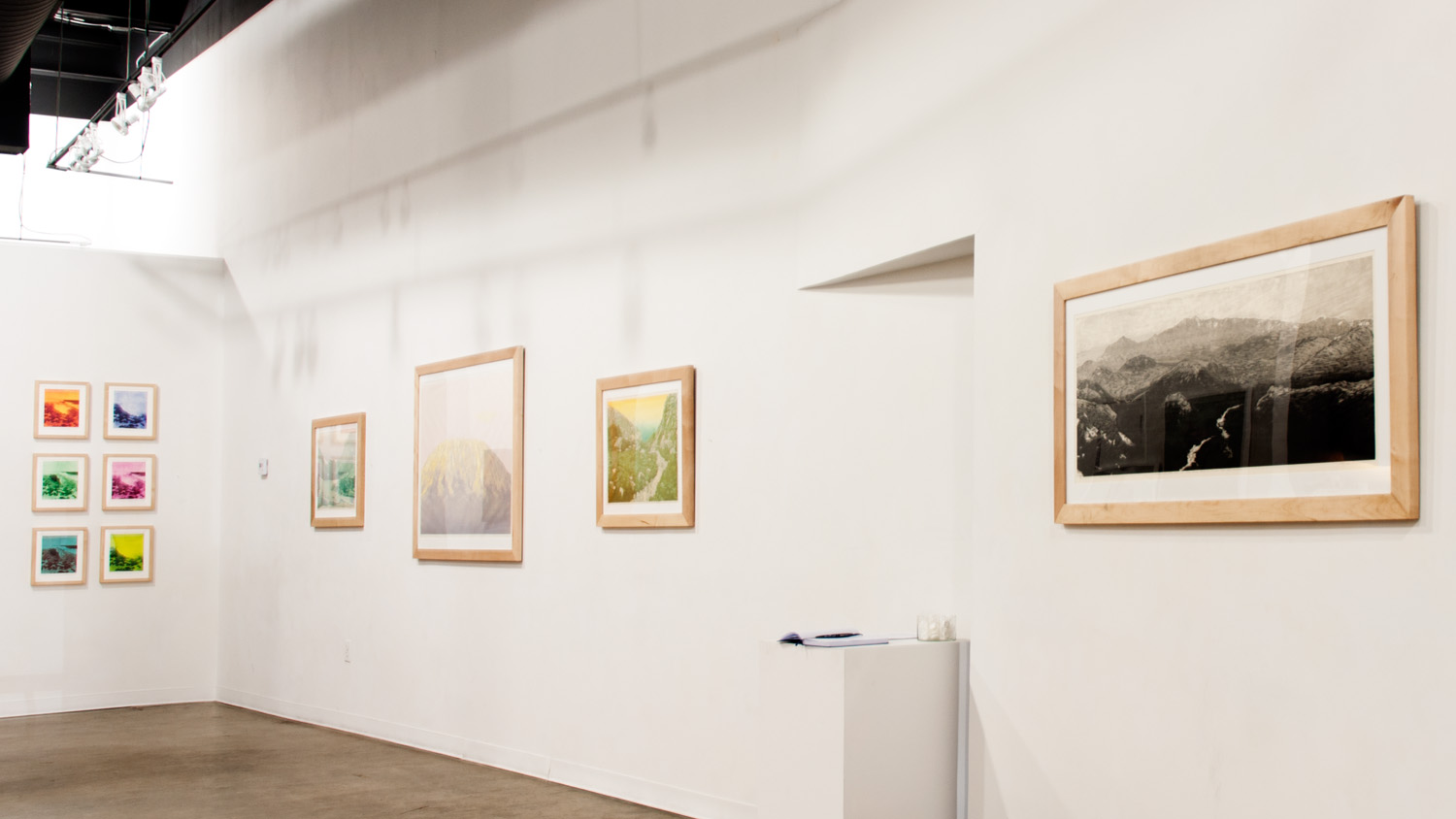“This piece — this little rabbit — the artist, Larry Jens Anderson, is in his seventies and he started the Atlanta College of Art later becoming SCAD-Atlanta. He has Parkinson’s and he was unable to hold a paintbrush. He taught a class on unconventional painting — he painted this piece with a branch found in his backyard and taught his class to use anything but a paintbrush to paint with. This rabbit is done with a stick and it’s amazing how much detail, how much quality and character he can get from just a branch. He then underwent a procedure at Emory and this painting [points to “The Burden Collage,” graphite and ink on paper] was done after his operation, when he could hold a paintbrush again. Larry’s every single line has a story and a purpose and tells a rich tapestry of his own life experiences.”
I ask Yu-Kai about his own history.
His parents emigrated from Taiwan and Yu-Kai grew up in Georgia. He graduated from Emory in 2001 as a pre-med student with a degree in music — piano performance. A classically trained pianist, he teaches piano at his private studio near his home.
“My youngest [student] is four, my oldest is 72. What I’ve learned through teaching is that where there’s a will there’s a way. We can all learn if we’re open to it.”
He describes himself as a day-dreamer. As a child, Yu-Kai spent his free time drawing and coloring, activities that garnered him awards. He began studying music in fourth grade — first violin, then piano and voice — and hasn’t stopped since. At Emory, he took art history classes combined with chemistry and biology for his pre-med requirements, all while continuing to sharpen his musical skills under the tutelage of Dr. William Ransom.
“Music and science go hand-in-hand, they really complement each other. The discipline it takes to read, learn, absorb music — it translates well to the discipline needed in sciences.”
Yu-Kai was part of the a-cappella group No Strings Attached and SPC (Student Programming Council) where he helped bring in entertainers like Jerry Springer, Goo Goo Dolls and Busta Rhymes. “That was so fun. It helped me because now I continually plan events for the gallery: artist talks, openings, closings.”
After various internships in medical centers in Atlanta, he realized that he didn’t want “to see sick people all the time and work from 7 to 7.” Post-graduation, he took his medical school exams and did well, but took a leap of faith to pursue the arts.
He worked at two galleries before opening KAI LIN ART. “I had mentors. It’s good to have mentors, to find people that you trust, that you like —or even people that you don’t like but trust—so that you can learn from their mistakes and figure out what you’d do differently.”
While he is constantly surrounded by beautiful art at work, his job is anything but simple and pretty.
“It’s difficult [to own and run a gallery] everyday. It’s a challenge to sustain, to grow and to keep it all up in the air. It’s beautiful from the outside — from the inside it takes a lot of work, a lot of conversations and connections, thought and action for art to happen. The funding and the nitty gritty of finances are so important. There are so many artists and only a few galleries and a handful of art collectors — we have to carry the weight of all that. It’s not an easy role.”
I ask him whether his musical training informs his current work.
“Art and music are integrally intertwined. A lot of artists create their art while listening to music — there are just different types of art and I think they can all be meditative. Music is audibly meditative; paintings and drawings are visually [meditative]. They are all sensorial. Music helps inform being an art gallerist in that it takes a lot of diligence, practice, patience, dedication and self-motivation. You need all these to make things happen.”
Our talk shifts to a discussion about individual and collective purpose.
“That’s why we are here, to connect and to relate, to learn from the experiences of others, and the visions and the histories that artists carry with them.”
Yu-Kai believes we connect with a piece of art or a piece of music on a non-communicative, emotional “soul-level.” He believes this visceral connection allows us to open ourselves up to learning about the creative process and about the artist’s motivation and vision. We can then understand a little bit more of ourselves through the lens of another.
“What you see can be interpreted in so many ways and that’s visible now, especially with politics. One person can hear the completely opposite of what the other person hears. But art is a great equalizer —once the work of art is finished, it’s meant for the masses to enjoy, appreciate, internalize and reflect upon.”
We then delve into a conversation about the way art negotiates time.
“We build buildings just to house art: museums just for our artifacts, for creativity. There are so many strides to place art in rooms and boxes and frames that are completely sealed. It’s pretty fascinating when you think about the life of art. It encapsulates a period of time, it encapsulates the creativity of its artist, and we want to carry it on so that generations from now people can still see it and appreciate the meaning of it from that time when the person lived.”






